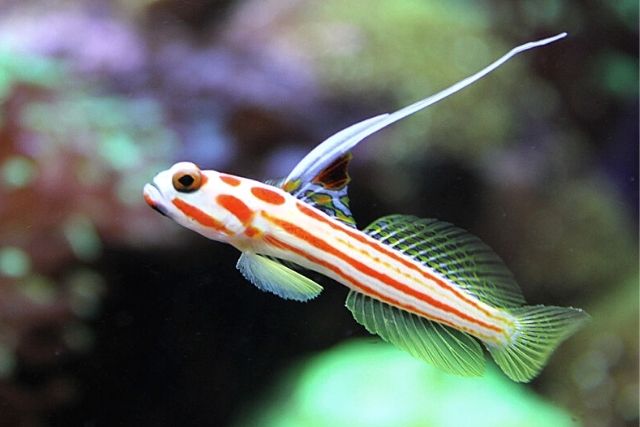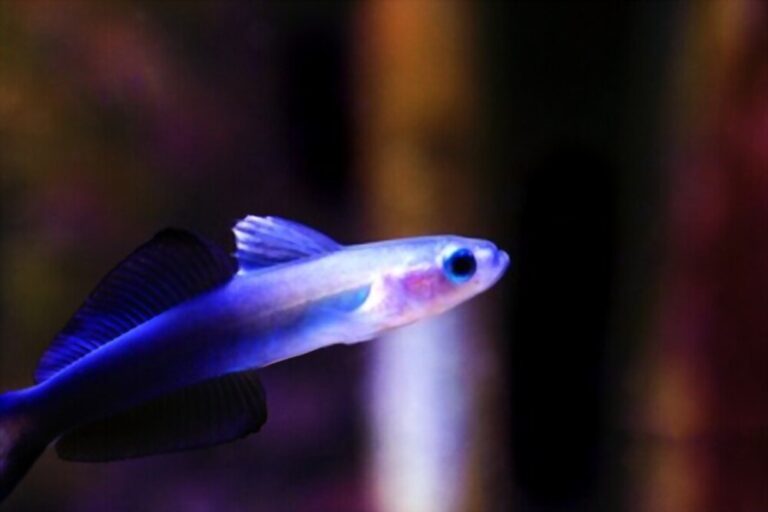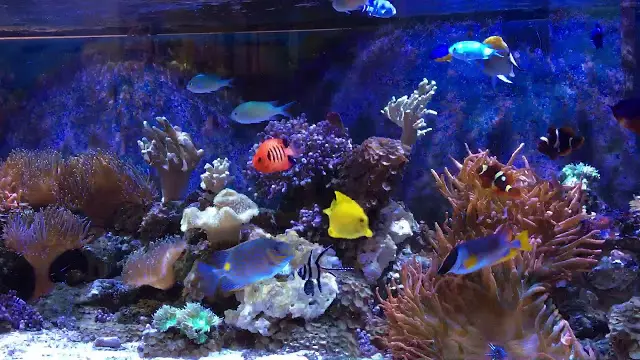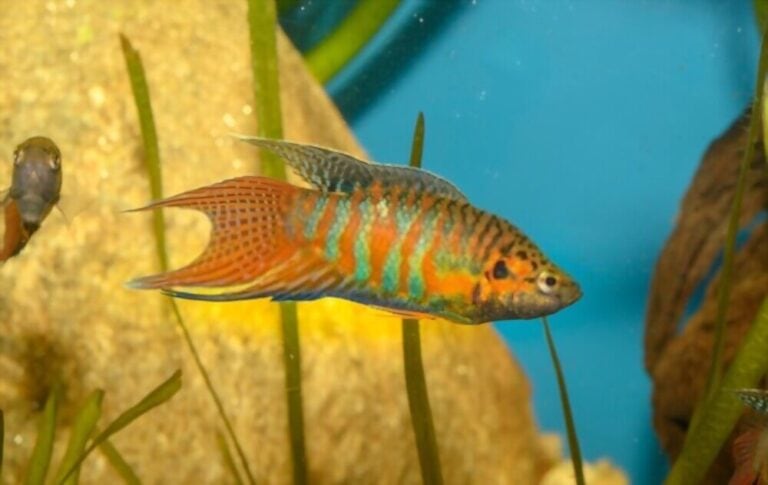Endler Guppy Care Guide: Diet, Tank Mates, & Tips
Endler guppies are also commonly known as Endler livebearers. Though they are not taxonomically placed in the same category as the common guppies.
In this post, we will get to know the care sheet of Endler guppy, including their diet, appearance, Tankmates, and other important information.
They are believed to have almost the same genetic makeup as the common guppies and are distinctively placed at a different species level for conservation purposes. Their striking colors make them distinct and famous in the aquarium trade.
Endler Guppy Size
The Endler guppies are small colorful fish. They are thought to have a slightly larger size in the clean wild environment than in the home aquariums. Unlike the wild habitat, the tank with local boundaries doesn’t let the fish reach its potential size.

The female Endler guppies are slightly larger than the males. The maximum length that a female attains is 1.8 inches, while the males are restricted to just 1 inch of height. But nature is not unfair.
Appearance
The males are bestowed with more vibrant and spectacular coloration than the females. This variety’s overall appearance captivates the hobbyists and makes them some of the most popular little fishes in the aquarium trade.
The Endler guppy’s coloration pattern consists of three primary colors: orange, silver, and green. Mainly prominent along with the fins and lower half of the body.
Endler Guppy Lifespan
The life span of Endler guppies is interestingly dramatic as the sex of the individual contributes to the significant factor in determining life expectancy.
They are supposed to live a maximum of 4 years in a clean and ideal wild environment. However, there is a significant drop in their lifespan when being housed.
On average, they can live up to 2 to 3 years in the home aquarium, with some living longer if it has adequately been cared for. As indicated in the paragraph’s start, the female Endler guppies have a much shorter lifespan than the males.
It is because bearing fry and giving birth costs much of their lifespan. However, you can expect to have more of this beautiful fish in your aquarium with proper care and maintaining the best conditions.
Types of Endler Guppy
Types of Endler guppy fish are just a consequence of Endler’s origin, size, and coloration. We can categorize them into three subgroups.
The part of a classification system based on them to distinguish them in the trade as hybrids of Endler livebearers, other livebearers, and real guppies is also available in markets.
There are three types of Endler guppies named in a different class with the alphabet. Those three classes are Class N, Class P, and Class K Endler guppies.
The Endlers, which are precisely wild-caught from their origin in Venezuela or the purebred specimens of the captive breeding, are placed in the ‘N’ class. Those specimens aren’t known for their origins but based on size, coloration, and appearance.
These Endler guppies are placed in the ‘P’ category. The third category that felt a strong need to classify the Endler guppies in the ‘K’ category.
All the fishes are still sold under the name Endler livebearers in this class.
Still, they have been genetically shaken up by cross-breeding of true Endler guppies with other livebearers such as fancy guppies.
Endler Guppy Food
In The Wild
Endler Guppy fish can be regarded as omnivorous. In the wild natural habitat, they feed on different types of tiny organisms, including small insects and worms.
Plant and algae matter also accounts for a significant portion of the diet. By keeping their natural feeding preferences in mind, it is best to feed them a balanced diet that can provide them with all the necessary nutrients to perform best in the home aquarium.
In The Aquarium
High-quality flakes, along with finely chopped frozen brine shrimps and bloodworms, can be used as their dietary staple.
Special flakes for the Endler guppies have also been developed and are now available in the stores. Flakes alone have the potential to be used as their nutritional source.
Live and frozen foods such as Brine shrimps, bloodworms, daphnia, tubifex worms, and other small invertebrates make up a proteinaceous part of their diet.
However, live food must be kept as an occasional part of their diet to minimize the chances of parasitic infections.
Frozen bloodworms and brine shrimp are considered a treat for the Endler guppies. They may tend to overfeed on them, so be cautious and keep a check on the amount of every feeding.
So, if we wrap it all up, commercially prepared flakes along with some veggie matter and a little frozen treat are all that your Endler livebearer needs.
As far as the number of feedings is concerned, it is best to feed them twice a day with the amount of food that the fish can finish within 2 minutes.
Endler Guppy Care
Caring for Endler guppies is not very hard. Therefore, they are equally popular among beginners as well as experienced aquarists.
They are very hardy and can easily thrive in a wide range of water conditions. Housing and maintaining water quality are the two significant factors in caring for Endler guppy fish.
They are shoaling fish and must not be kept singly. It is always best to keep them in groups that may turn out to be the breeding groups.
One male for every three females makes the best Shoal. Being in the shoaling group would prevent them from stressing out. Water changes should be made every week to ensure that the level of nitrates must be kept at its minimum.
Bulleted points below are the water parameters to be maintained to make your Endler guppy thrive in your tank.
- Endler guppies can tolerate a pH ranging from 5.5 to 8, making them most hardy and suitable for most aquariums.
- As far as the temperature is concerned, they can survive in a wide range, which is absolutely dramatic. The minimum temperature at which the Endler livebearer has been kept is 18 degrees Celsius, and they can survive as much as 29 ⁰C.
- Water hardness should be in the range of 8-15⁰ dH.
Endler guppies Tank Size
Owing to their small size, these fishes can also be kept in nano tanks, but that’s not the right and recommended choice.
We recommend keeping them in tanks as small as 10 gallons and as large as 20 gallons to make them feel more comfortable.
The aquarium for this guppy fish needs heavy plantation. Floating plants would serve their purpose for them.
Tank Mates
Endler guppy fish are extremely peaceful, and thanks to their small size, they show compatibility only with small and peaceful species.
We recommend keeping them in a special tank, but if you still want a wonderful community in your aquarium. The suitable tankmates with Endler guppy fish are tetras, small rainbow fish, Dwarf corydoras, Glassfish, and Honey gourami.
Final Words
As far as the geographical distribution of Endler guppies is concerned, they are endemic to a large freshwater lake named Laguna de Patos and other freshwater lagoons in Venezuela.
The wild forms are in danger of being added to the category of endangered species. Thanks to the industrial and commercial wastes being thrown into their home. It is also now believed that this species has already been extinct from the lake.







